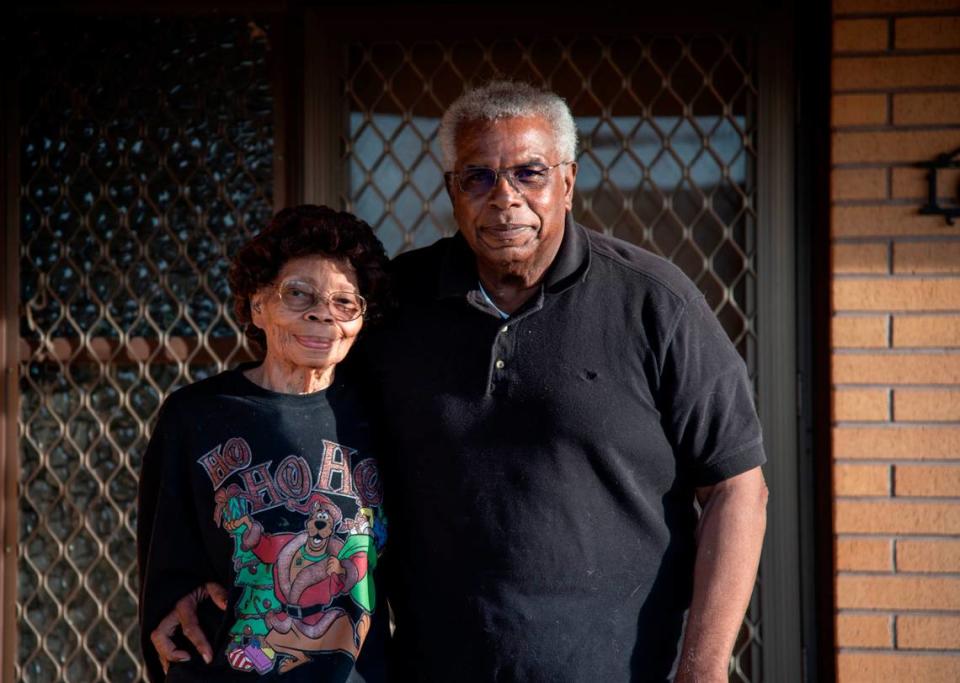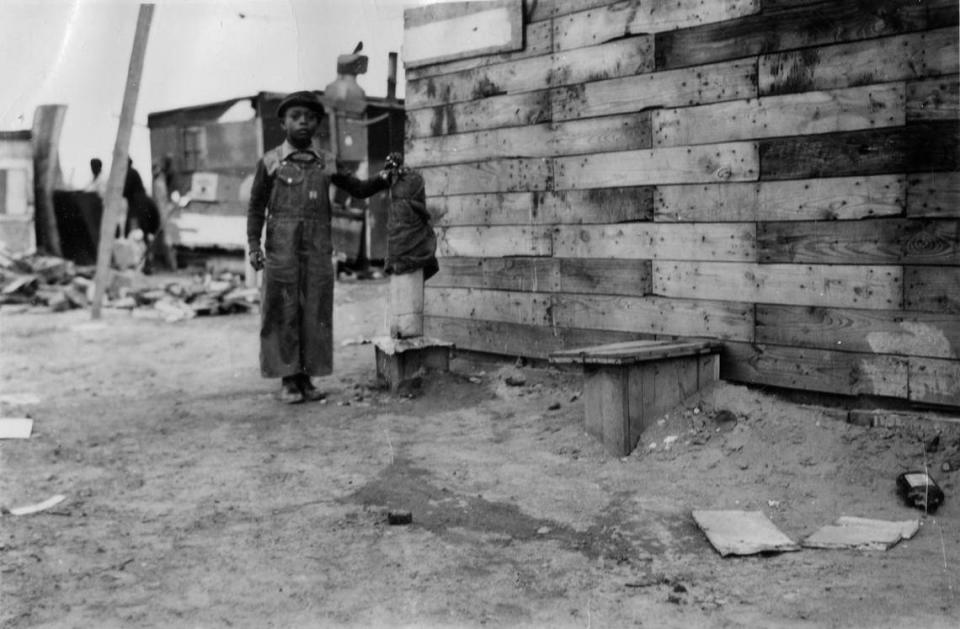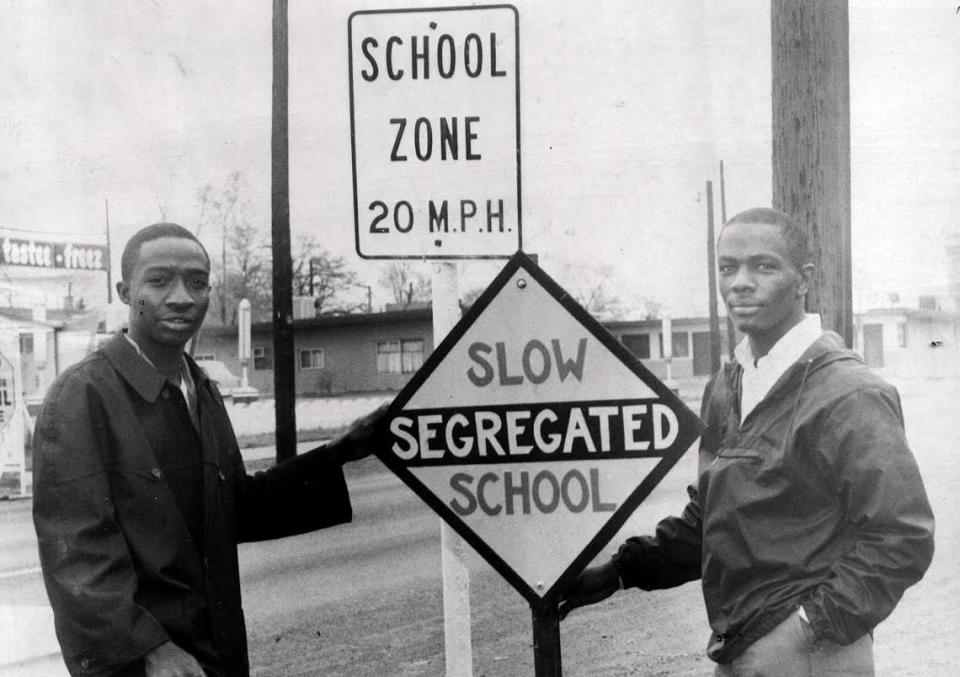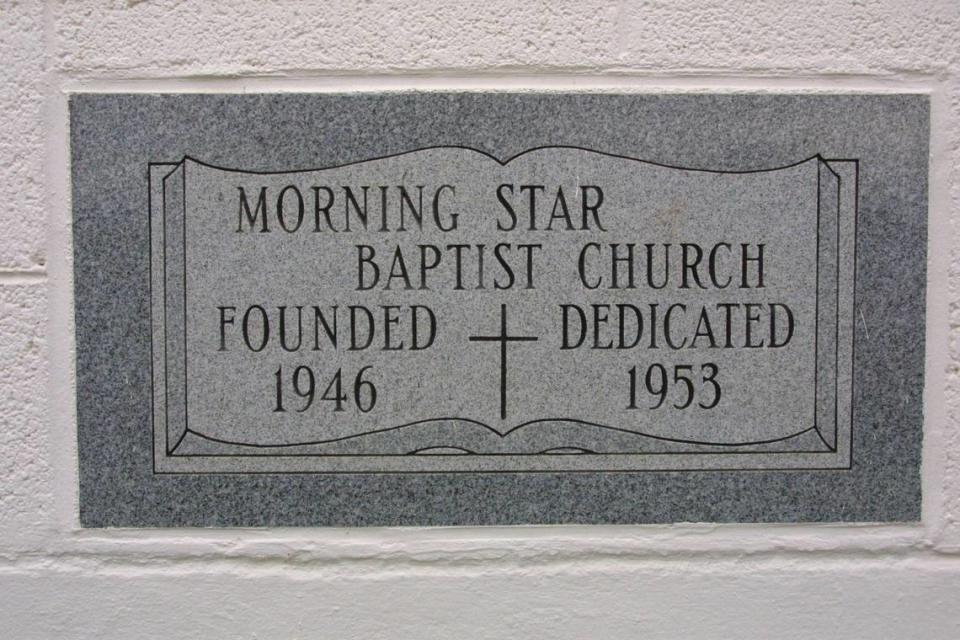‘A history of resistance’ WSU class documents east Pasco Black history for National Parks
Community members and visitors will soon be able to learn more about east Pasco’s Black history on the National Parks Service app and website.
Additions include a walking tour, digital exhibit, research essays, and audio and video content.
Currently, the app features a self-guided Black history driving tour of the Tri-Cities.
WSU Tri-Cities assistant professor of history Robert Franklin explained there is a lack of documentation of east Pasco’s history and the non-white communities that have lived there.

Longtime Pasco resident Dallas Barnes moved to Pasco from St. Louis as a sixth-grader in 1952. As he got older, he became more conscious about the divides in the community he felt so welcome in.
“I felt that I belonged in Pasco because what tied the community together other than the churches were the schools,” Barnes said. “Students from every denomination went to school in Pasco.”
“I didn’t have to search for an identity (in Pasco),” Barnes continued. “It was crystal clear in my mind who I was, but I don’t necessarily know if I saw myself as a Black man, or just a man. I did not have that color consciousness, but most of my social life was in the Black community. And when I was with my white colleagues and friends, I was comfortable with them.”
Preserving history
The effort to capture and share the area’s history is years in the making.
In late February, 21 WSU architecture students and two history students in their last semester visited east Pasco from Pullman as part of a graduate student class, “Issues in Architecture.”
Following weeks of readings, discussions and seminars about east Pasco history, they experienced being in the community and learned about the history live.
Franklin and WSU Pullman architecture professor Phil Gruen led the course. Franklin, who lives in the Tri-Cities, serves as assistant director of the Hanford History Project.

Years before the course started, in 2017, the team at the Hanford History Project was approached by the National Parks Service to complete a project documenting Black migration, segregation and civil rights issues at Hanford and the Tri-Cities.
Franklin partnered with the Richland-based African American Community Cultural & Educational Society (AACCES) to collect 20 oral histories for the project.
He also co-wrote “Echoes of Exclusion,” a book published in 2020 about non-white communities in the Tri-Cities, including the Wanapum tribe, Japanese Americans and the Black community.

Lewis Street Underpass
Then in 2020, the city of Pasco announced its intent to close the Lewis Street Underpass, which brought up questions about how the underpass would be documented as a historically significant piece of architecture.
“The underpass tells this really important racial story about the Tri-Cities,” he said. “There are more than 1,500 historical sites in the state of Washington on the National Register of Historical Places. Six are associated with Black people.”
Two of the six sites are located in Pasco: Kurtzman Park and Morning Star Baptist Church.

The underpass closure inspired Franklin to pull in architecture professor Phil Gruen, in hopes that they could involve students and find ways to commemorate the underpass and its history.
“I said, ‘Phil, I have a project for us. Let’s take architecture students who are going to go out into the world and practice. And let’s teach them to look at underrepresented communities and look at how architecture and infrastructure shapes those communities.’”
Franklin and Hanford Site Manager Becky Burghart received a $110,000 civil rights project grant to continue studying the Manhattan Project Historical Park.

Using the oral histories previously gathered as a jumping-off point, they planned to produce interpretive materials about east Pasco, including a walking tour, digital exhibit, a series of research essays, and audio and video content.
These materials became the framework for the semester-long projects that the WSU students completed.
New ways to experience history
Referencing community input, some of the students also imagined ideas for new buildings and features in Pasco, including a community center, indoor soccer field and a migrant worker memorial.
Students were also expressing that they wanted to interact within communities and practice talking to clients.
“That was one thing that we could promise,” Franklin said.
In Pasco, the students met with AACCES board members Vanessa and Leonard Moore, Martin Valadez, regional director of Heritage University’s Tri-Cities branch campus at Columbia Basin College, and two Latino WSU students who grew up in east Pasco.
“That was the community as we could distill it. It reflected the Black history and the Latino community,” Franklin said.
Vanessa Moore told the Herald that she feels it is a good thing that the projects will document this area of significance, and that during the visit, students were interested and asked good questions.
The group visited downtown Pasco, Kurtzman Park and Morning Star Baptist Church.
“Pasco was a civil rights battleground and has a history of resistance. Learning about that connects local students and people who visit,” Franklin said.

Barnes described how his “color consciousness” didn’t truly develop until he came up as a young adult during the civil rights movement.
“The civil rights movement came on and then just simply by default, because you’re Black, you were somehow part of the opposition,” Barnes said.
“If you’re Black, the opposition is white,” he continued. “And then you explore a little bit about what was going on and you find out that your people are being discriminated against. You take a look around and see that your people don’t have a job. One thing as I look back on my experience, I never had a Black person to contribute to my formal education in the state of Washington.”’
Future projects
Work on the projects will continue for the next two years.
Three students from the class are reviewing and refining the projects this summer through an internship that Franklin oversees. The projects will be submitted in 2026, per the grant requirements.
The resources that the students contributed to will be available to the public through the National Parks Service app and website. The essays will be used to create short-form web and app content.
Future projects that Franklin is involved with include a re-creating a historical map of east Pasco in the 1960s alongside community members, and continuing work with the AACCES and city of Pasco to commemorate the Lewis Street Underpass. Franklin also highlighted the need for a project about the history of the Latino community in the Tri-Cities.
“East Pasco is still one of the most underserved, underdeveloped communities in the Tri-Cities. If we preserve part of the underpass, we need to be preserving the story and knowledge of the community, and using it as a way to bring resources and attention to the stories about east Pasco that are positive and uplifting,” Franklin said.


